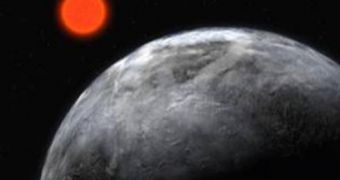Recent studies, focused on finding the best hypothetical places where life could exist in the Universe, seem to point out the fact that orange dwarfs are the most suitable locations for the emergence of basic life forms, or maybe even of complex ones. Astronomers say that the habitable zones – as in the areas around stars where temperatures are just right to support liquid water – are a lot safer than those around red dwarfs, for example, and that a planet existing in such a zone would have high chances of sparking life at one point.
In addition, researchers say, these stars also have a longer time span than Sun-sized stellar objects, despite the fact that they are smaller in size and brightness. Currently, a team of investigators from the Villanova University, in Pennsylvania, the United States, led by expert Edward Guinan, is working on determining how a star's “life-supporting properties” vary according to its size and mass. For this purpose, the experts are shuffling thick archives of data, collected by the ROSAT X-ray, orbit-based observatory, and by a number of Earth-based telescopes.
One of the main reasons, Guinan shares, why red dwarfs are more dangerous than their orange counterparts is that they show a much higher chance of releasing dangerously large solar emissions, which could wipe out life on a nearby planet in an instant. The red variety grows to be about 10 to 50 percent larger than our own Sun, whereas orange dwarfs are considerably smaller, and therefore less likely to emit powerful radiation waves.
Also, specimens larger than 80 percent the mass of the Sun have been rarely found, and most of the orange stars are just half the size and mass of our own star. Their level of solar activity is roughly the same as that we are experiencing on Earth, but one great advantage that these formations have over our own is that they live to be about 20 billion years old, nearly double the Sun's life span. Furthermore, they keep a steady burn temperature, and do not fluctuate like our star does. Astronomers estimate that, in no more than one billion years, the heat emanating from the Sun will be so great, that life as we know it will become impossible on Earth.
“There are old ones around – some are 8 to 9 billion years old, and could have planets that are more evolved,” Guinan tells NewScientist. He adds that the SETI initiative could try to identify prospective planets in solar systems around orange dwarfs, and that investigations may yield more conclusive results than looking around a red dwarf, for example. “They do seem to be a sweet spot for prospects of actually detecting habitable planets,” University of California in Santa Cruz (UCSC) expert Gregory Laughlin concludes.

 14 DAY TRIAL //
14 DAY TRIAL //